Greetings All. I’ve been watching the NFL since the halcyon days of the 80s where highlights were broadcast on Channel 4. As a young lad I didn’t have much of a clue about what was going on and soon tired of it. I was reawakened in the mid to late 90s and I’ve been following the sport with interest ever since.
However I’m a relative newcomer to college football. In the past seven or eight years I’ve been getting my head around the real heart of America’s game. With more and more interest in the NFL Draft, even from the casual fan, the ease of access to college games on UK TV is starting to attract an interest. With so many teams and it’s quite a daunting landscape to approach. I’ve decided to put something together for the newcomer that answers some of the questions I once had (and still do) about a game that really can brighten up any Saturday from September to December. Some of this may give way to more questions around the general (let’s be polite) nuances of the sport, but this will hopefully act as a beginner’s guide and get you tuning in on Saturdays.
Why should I watch college football?
Let’s start with the obvious question. College football has heritage and roots going back to the late 1800s when the game was more rugby based. The sport holds far more history due to the fandom feeling a sense of belonging to the college team. Unlike NFL teams, you’ll never see a college team move to a different city. That’s part of the reason you will often see crowds in excess of 80,000 cheering on their team. The passionate fan base accompanied with a brass band belting out tunes during a break in play is something to behold.
Another difference from the NFL is that college game day rosters have no limit. With the amount of teams and athletes, the skill levels are vast. This makes for high scoring, high octane entertainment. So in short, budding NFL talent + feverishly emotional fans + historical prestige + gameday songs and heated rivalries + lots of touchdowns = “I’m sold”.
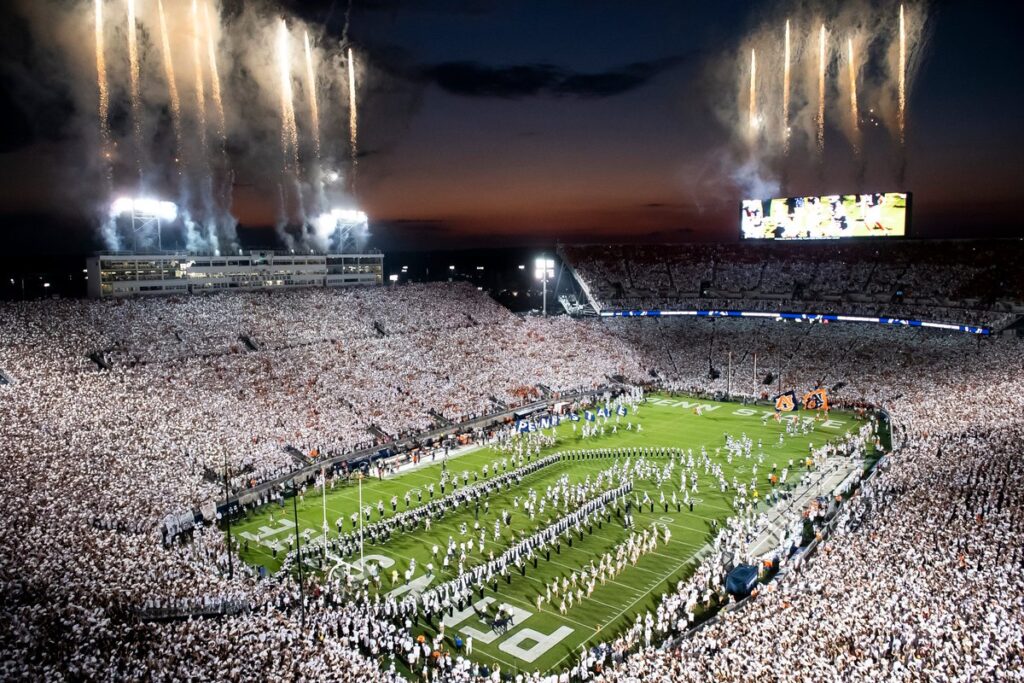
Are the rules different?
The premise of football and scoring is still the same however there are some notable differences. In no particular order:
- The college ball is slightly smaller by just over an inch – so during draft season when you hear concerns over quarterback hand size, it’s a reasonable concern!
- For a catch to be completed you only need one foot down – this differs from NFL, where both feet are required. In college those toe tapping catches on the sideline only need one foot inbounds
- There are no ties in college football – in a nutshell there are two overtime periods whereby each team get the ball at their own 25 yard line and try and score. If the scores are tied after these two periods, each team alternates two-point conversion attempts from the 3-yard line. This carries on until one team scores and stops the other. This was brought in following an LSU vs Texas A&M game in 2019. The game tied the record for seven overtime periods, with A&M eventually running out 74-72 winners – I did say the games can be high scoring!
- The hash marks are further apart in college football than in the NFL – What’s the big deal? Well, this means plans can begin much closer to the sideline, allowing isolation and spacing on the widest side of the field. Essentially there is more space if you get the ball into the hands of a talented playmaker. It’s also a learning curve for quarterbacks entering the NFL as they have to push the ball into tighter spaces in the pro game
- The clock stops on first downs – when a team gains a first down the clock is stopped whilst the chains are moved and then restarted. It may not seem much, but those extra seconds can make a big difference. On the flip side, there is no two-minute warning and hence no ‘freebie’ timeout
- Runners ruled down once on the ground – in the NFL they have down by contact, so if a player slips or trips they can get up and carry on. That isn’t the case in college. You are ruled down if anything other than your hands and feet touch the ground
- Extra point distance – In 2015 the NFL moved the extra point snap to the 15-yard line. College takes theirs from the 3-yard line
- Pass interference differences – pass interference does exist in college, but there is no five yard contact rule like in the NFL. This means that defensive backs can get more physical with receivers. The penalty for a PI call in college is 15 yards if the foul occurs more than 15 yards down the field, else it is at the spot of the foul. This is very different in the NFL, with a penalty being awarded at the spot of the foul
Do they have a ‘Super Bowl’?
The ultimate prize on offer is the College Football National Championship. The College Football Playoff is an annual postseason invitational tournament and has been in operation since 2014. The four highest ranked teams compete in a knockout-style semi-final before the winners go head-to-head for the main prize. These games are usually held in NFL stadiums and rotate among the “New Years Six” Bowls (more on those later). The Georgia Bulldogs currently the reigning national champions.
Teams also get to compete for their own conference championships before the playoffs begin. There has been talk of expanding the playoffs beyond four teams for some time, but the conference commissioners and Notre Dame athletic director have not been able to agree on a way forward that suits everyone’s needs.
Wait, so a bunch of suits ranks these teams on a weekly basis?
With so many teams in the NCAA (National Collegiate Athletic Association) FBS (Football Bowl Subdivision), a 13-member committee was set up to rank the Top 25 teams. These rankings are based on performance and strength of schedule and released every Tuesday in the second half of the season. This Top 25 is not to be confused with the preseason Coaches Top 25 poll, or the weekly Associated Press Top 25. I did say you may have more questions….needless to say this is always an in-season talking point and a controversial topic.
What are all these Bowl games you mentioned?
As a reward for success, teams get to compete in a televised game at a neutral stadium and win a trophy. Bowl games have different sponsors, who will pay the participating teams. These games are independent of their own conference championship trophies. There were previously strict qualification rules, but due to the increase in Bowl games eligibility has become less strict. The New Year’s Six, which plays a part of the National Championship playoff, are the most prestigious and will have the Top 12 voted teams appearing in them. They are The Rose Bowl, The Sugar Bowl, The Fiesta Bowl, The Orange Bowl, The Cotton Bowl and The Peach Bowl.
The growth of Bowl games has caused some indifference amongst fans, but more football cannot be a bad thing! Unfortunately more and more future NFL stars are dropping out of “meaningless” Bowl Games to reduce injury risk before turning pro. The games however do have some amusing names and sponsors with “The Famous Idaho Potato Bowl” and “Duke’s Mayo Bowl” being personal favourites.
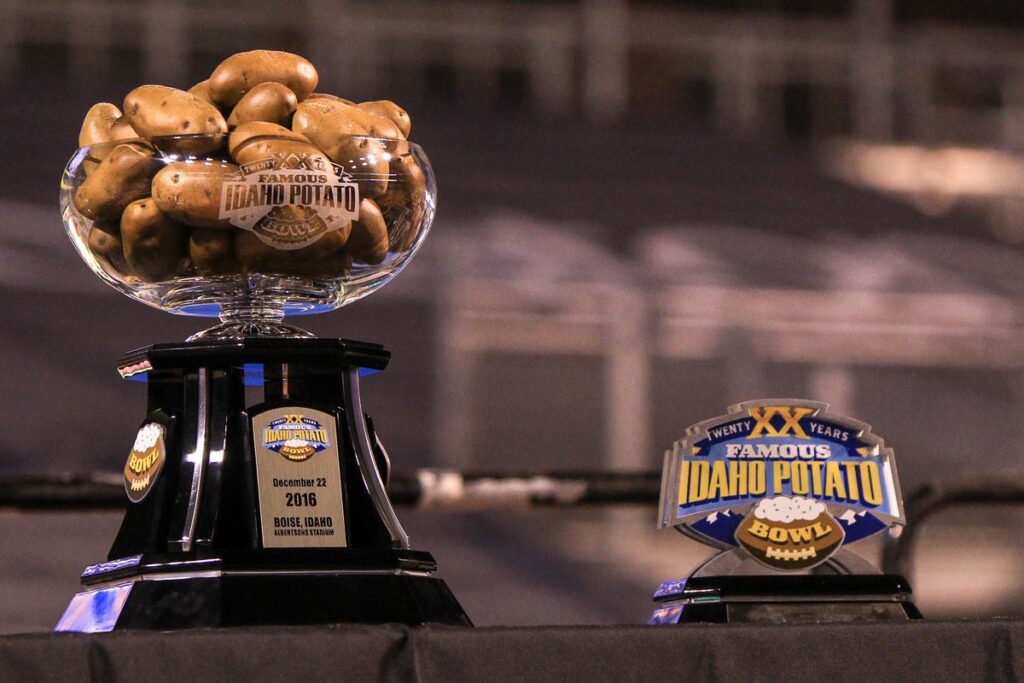
How many teams are there and how are the divisions structured?
I believe this is the single biggest turn off for new viewers of college football. That said, when you get your head round it, it all starts to make sense. Strap in for this one;
There are 10 conferences and 131 FBS teams in the highest Division of College Football. These conferences consist of two groups, the “Power 5” and the “Group of 5”. The Power 5, as the name suggests, predominantly houses the bigger and more successful teams. These conferences and their respective divisions are:
- Atlantic Coastal Conference (ACC) – 2 Divisions, Winner of each division plays off for the ACC title
- ACC Atlantic: Boston College, Clemson, Florida State, Louisville, North Carolina State, Syracuse & Wake Forest
- ACC Coastal: Duke, Georgia Tech, Miami (Florida), North Carolina, Pittsburgh, Virginia & Virginia Tech
- Big Ten – 2 Divisions, Winner of each division plays off for the BIG 10 title
- Big Ten East: Indiana, Maryland, Michigan, Michigan State, Ohio State, Penn State & Rutgers
- Big Ten West: Illinois, Iowa, Minnesota, Nebraska, Northwestern, Purdue & Wisconsin
- Big 12 – 1 Division, Top 2 Teams compete for the BIG12 title
- Big 12: Baylor, Iowa State, Kansas, Kansas State, Oklahoma, Oklahoma State, TCU (Texas Christian University), Texas, Texas Tech & West Virginia
- Pac-12 – 1 Division, Top 2 teams compete for the PAC12 title
- PAC12: Arizona, Arizona State, California, Colorado, Oregon, Oregon State, Stanford, UCLA (University of Central Los Angeles), USC (University of Southern California), Utah, Washington & Washington State
- SEC (Southeastern Conference) – 2 Divisions, Top 2 Teams compete for the SEC title
- SEC West: Alabama, Arkansas, Auburn, LSU (Louisiana State University), Mississippi, Mississippi State & Texas A&M
- SEC East: Georgia, Florida, Kentucky, Missouri, South Carolina, Tennessee & Vanderbilt
After the Power 5, you have the Group of 5. These five conferences hold less political sway within the boardrooms of the sport. This is mainly due to the size of the colleges and the TV deals given to each conference in accordance with its audience. There are however highly entertaining games within the Group of 5 and many players in the NFL come from Group of 5 teams. Last year Cincinnati qualified as one of the top four teams in the country, becoming the first Group of 5 team to do so.
- AAC (American Athletic Conference) – 1 Division, Top 2 Teams compete for the AAC Title
- AAC: Cincinnati, East Carolina, Houston, Memphis, Navy, SMU (Southern Methodist University) South Florida, Tulane, Temple, Tulsa & UCF (University of Central Florida)
- Conference USA – 1 Division, Top 2 Teams compete for the Conference USA title
- C-USA: Charlotte, Florida Atlantic, FIU (Florida International), Louisiana Tech, Middle Tennessee State, North Texas, Rice, UAB (University of Alabama Birmingham), UTEP (University of Texas El Paso), UTSA (University of Texas San Antonio) & Western Kentucky
- MAC (Mid American Conference) – 2 Divisions, Top 2 Teams compete for the MAC title
- MAC East: Akron, Bowling Green, Buffalo, Kent State, Miami (Ohio), Ohio
- MAC West: Ball State, Central Michigan, Eastern Michigan, Northern Illinois, Toledo & Western Michigan
- Mountain West – 2 Divisions, Winner of each division plays off for the Mountain West title
- MW West: Fresno State, Hawaii, Nevada, San Diego State, San Jose State & UNLV (University of Las Vegas Nevada)
- MW Mountain: Air Force, Boise State, Colorado State, New Mexico, Utah State & Wyoming
- Sun Belt – 2 Divisions, Winner of each division plays off for the Sun Belt title
- East Division: Appalachian State, Coastal Carolina, Georgia Southern, Georgia State, James Madison, Marshall & Old Dominion
- Group B: Arkansas State, Louisiana, Louisiana Monroe, South Alabama, Southern Mississippi, Texas State & Troy
You can see most of these are more or less geographic, however there is change afoot within College football. You will see the word “realignment” a lot. We’ll come onto this later.
So there’s 130 college teams and that’s it?
No sorry, there are yet more conferences and sub-divisions under the FCS (Football Championship Subdivision) umbrella. Think of this as the second tier of college football. But let’s just worry about FBS for now and keep FCS as a reference.
Do you only play teams in your conference?
No, a college football schedule is another sticking point for new viewers. Each team plays 12 regular season games. Without getting into each division’s nuances, they will play eight or nine within their conference. If the team plays in a conference that has divisions, they will play all the teams in their division. Some conferences will ensure certain teams play each other every season as a rivalry game.
There is then (depending on conference) three or four non-conference scheduled games. These could be “cupcake” games, scheduled as easy victories at the start of the season against lesser opposition from College Football Subdivisions. They could also be matchups against high-powered juggernauts of the sport. Sometimes these games are scheduled 10+ years in advance. A lot of the conferences will look to abandon the internal divisions format in the coming years in what will be a time of sweeping change in the college landscape due to realignment.
Wait, I didn’t see Notre Dame in your list and they’re a college team right?
That’s correct, Notre Dame, Army, BYU (Brigham Young University), Liberty, New Mexico State, UCONN (University of Connecticut) and UMASS (University of Massachusetts) make up a group known as “Independents”. They do not compete for Conference Championships but are able to schedule their opponents with no ties to any divisions. What is the advantage of this? Not an awful lot unless you’re Notre Dame and have a brand like they do holding significant power in scheduling your own TV deals. This article from UK site The Touchdown by a Notre Dame fan is an excellent starting point for further reading.
You mentioned something about realignment?
The current state of college football as we know it will change irreversibly in the next two years. Last summer we saw Texas and Oklahoma declare their intention to leave the Big 12. Their applications to join the SEC were accepted soon after. This is a huge blow for the Big 12 as both teams are their major draw for the TV audience. This move also gives the SEC more power and more money as far as TV deals are concerned. They are already the most successful with regard to team appearances in the College Football Playoff and will have the most teams in the Top 25 rankings.
As the Pac-12 appeared to be wringing their hands in deciding whether to formally join or pilfer the remains of the Big 12, the Big Ten then made a shocking move. USC & UCLA announced their intention to leave the Pac-12 and officially join the Big 10. Whilst neither team has had much success of late, their name (especially USC) still carries weight in college football. These moves were also conveniently just in time for the Big Ten’s new TV deal negotiations. The Big 12 in turn then robbed the ACC, who in turn raided Conference USA…and so it goes on. Realignment will always be a talking point. College Athletic Directors will always try and maximise their earning potential and conference Commissioners will always look to strengthen their conference. We could be coming to a point of two super conferences in the coming years.
Do they have a Commissioner like Roger Goodell in the NFL?
There is no one true ‘czar’ ruling over College Football. Each conference has their own Commissioner. Whilst they work together for the good of college football, they each have their interests in their own ‘house’ and will ensure any decision that affects all college football has the best outcome for their conference. See my previous comment around the playoff expansion.
How do the colleges get these kids in?
Recruitment, recruitment, recruitment. A college head coach’s role is very different to that of an NFL head coach. To succeed, you need to be able to attract players to your team. Players are ranked out of high school by recruiting sites like 247sports. This ranking comes in the form of stars, with the top recruits given five stars. The more five-star recruits you get, the better your team usually turns out to be.
Do they pay the players?
The college cannot pay the player, nor can they offer money to recruit them. That said, a recent change in the law means that athletes can earn money off their name, image, and likeness (NIL). This means that a local car dealership could pay a player for appearing in an advert in front of a large pickup truck. The line between getting paid by a third party and that third party being associated with college is definitely becoming blurred.
NIL Collectives are now starting to appear. These are generally founded by influential alumni with access to funds from a swath of donors. Their aim is to help create opportunities for the student athletes. This should not however be linked to their choice of commitment to a college…confused? You’re not the only one. Even the big names in the sport can’t get their head around it. Nick Sabin and Jimbo Fisher, two prominent coaches from the SEC had some words between each other this offseason on NIL.
Is there anything similar to free agency?
The NCAA created the college transfer portal in 2018. This gives student athletes a centralised way of facilitating a move to a different college. Historically upon transferring you had to sit out an entire year and hence were not eligible to play. Under the new rules, players get a one-time transfer with immediate eligibility. Following this rule change the portal has become akin to free agency, with many athletes not finding a home. The lure of NIL deals has also had its influence, with many players moving on after a season with zero appearances to their name.
How can I tell which players will be in the NFL and at what point do they enter the NFL via the draft?
To be eligible for the draft, a student athlete must have been out of high school for at least three years and used up their eligibility before the start of the next college football season. Underclassmen can request special permission of the NFL College Advisory Committee to declare early. This will typically be accepted if there is a chance of the player being taken in the first two rounds.
As far as players to immediately watch, stick to the big teams in the big conferences. Schools like Alabama, Georgia, Clemson, LSU, Ohio State, Michigan & Oklahoma are all regular contributors to the early rounds of the draft.
Are there individual player awards?
Yes, there are. The most prominent of these is the Heisman Trophy. This is awarded annually to the best player in college football. Much like the NFL MVP, this tends to go to a quarterback. There are first and second team all-conference teams, as well as position-based national awards.
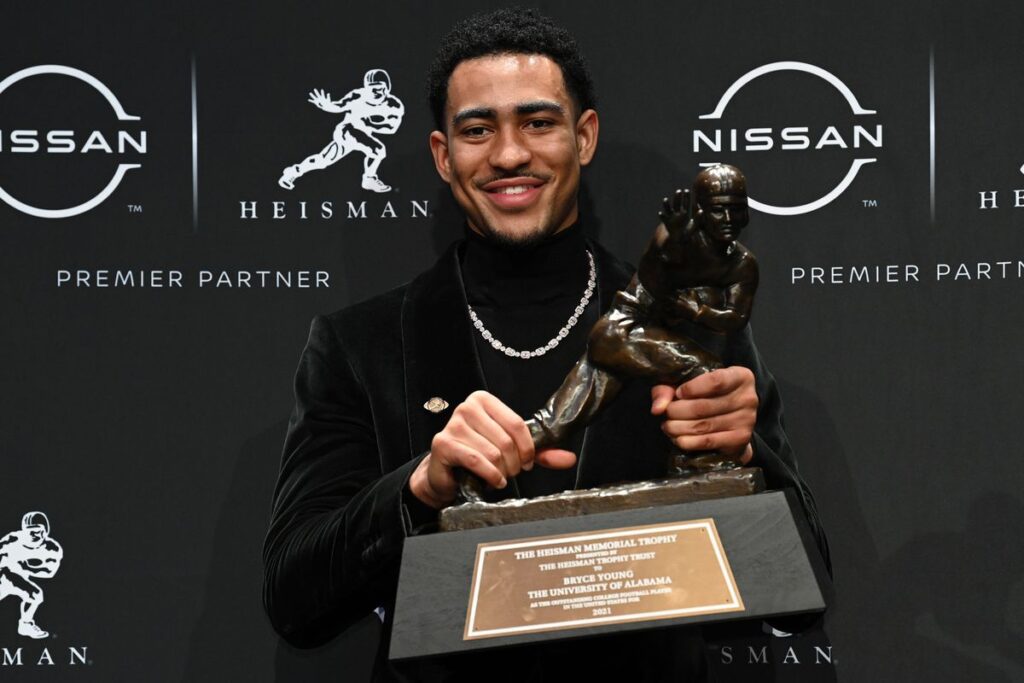
So which team should I support? (whispers) Who are the best teams?
I have an affinity for a few teams but find there’s always something to keep me entertained even if I don’t have any “skin in the game”. Maybe you’ll choose a college in the same state as your chosen NFL team? Maybe pick one as you like the uniform? There is, as you now know, plenty of choice. As for who the best teams are, the recently released coaches Top 25 should give you an idea of who to watch this season.
You mentioned something about “heated rivalries”. Which ones are the best?
With so much history and tradition, rivalries span back decades. Some have trophies for the victors in individual games. Some of the more bizarre can be found in the Big Ten, which is the oldest conference. Minnesota and Iowa for example play for a bronze pig trophy called “The Floyd of Rosedale”. Other bizarre trophies include the “The Old Oaken Bucket” contested between Indiana and Purdue and “The Platypus Trophy” vied for by Oregon and Oregon State.
With too many fierce rivalries to name them all, I’ve listed a few below to keep an eye on:
- Army Vs Navy
- Michigan Vs Ohio State
- Alabama Vs Auburn
- Oklahoma Vs Texas
- Florida Vs Florida State
- BYU Vs Utah
Please tell me they have mascots?
They most certainly do. Sparky The Sun Devil, Goldie The Gopher, Puddles The Duck, and Superfrog are personal favourites.
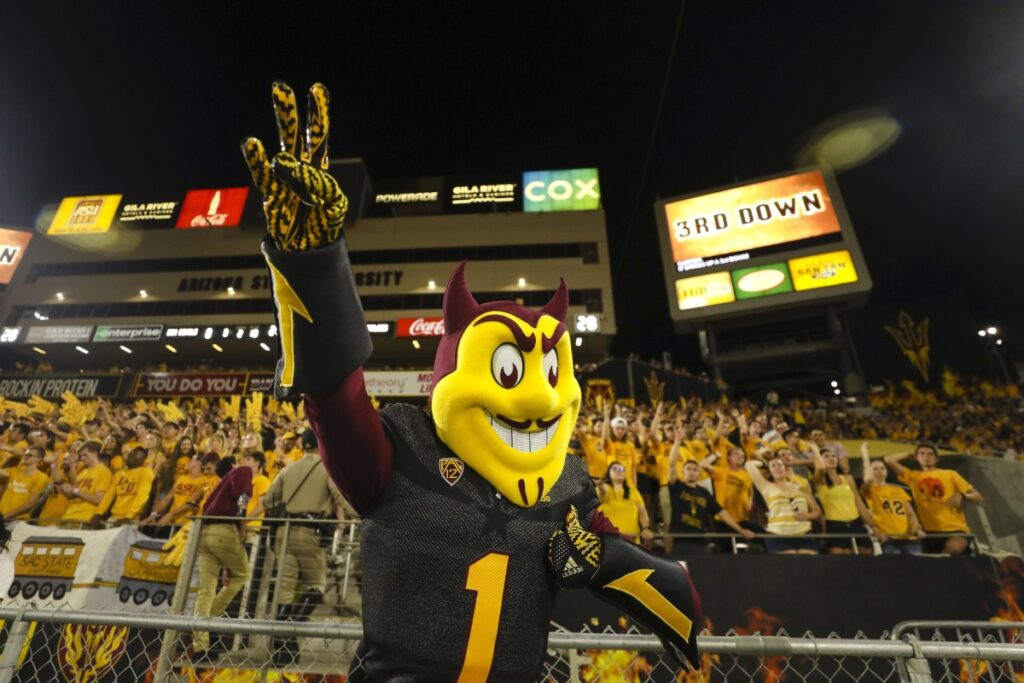
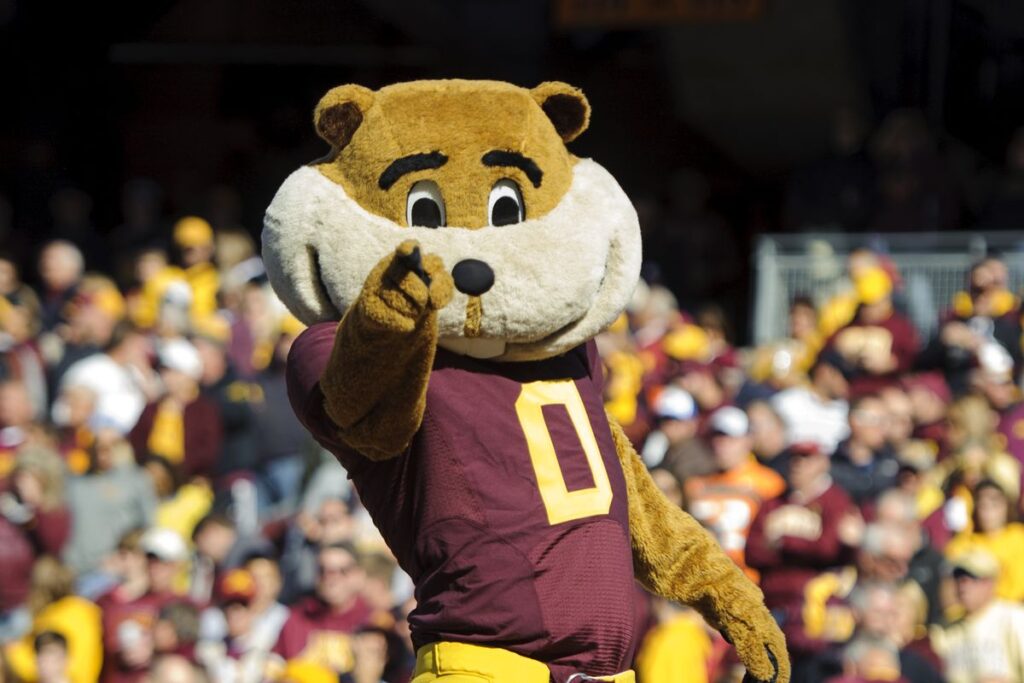
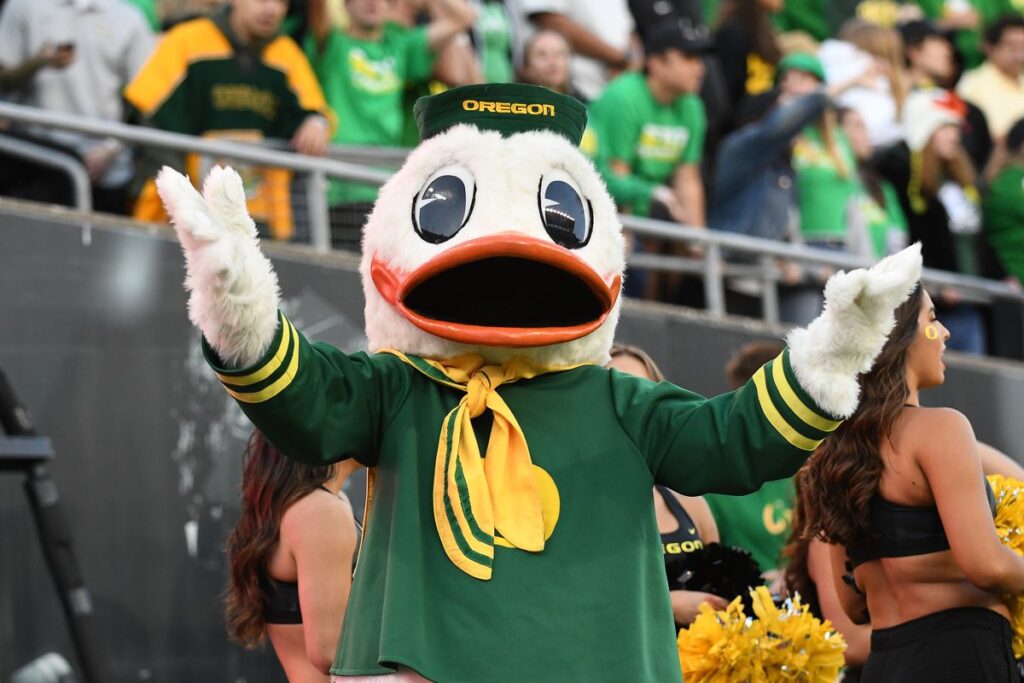
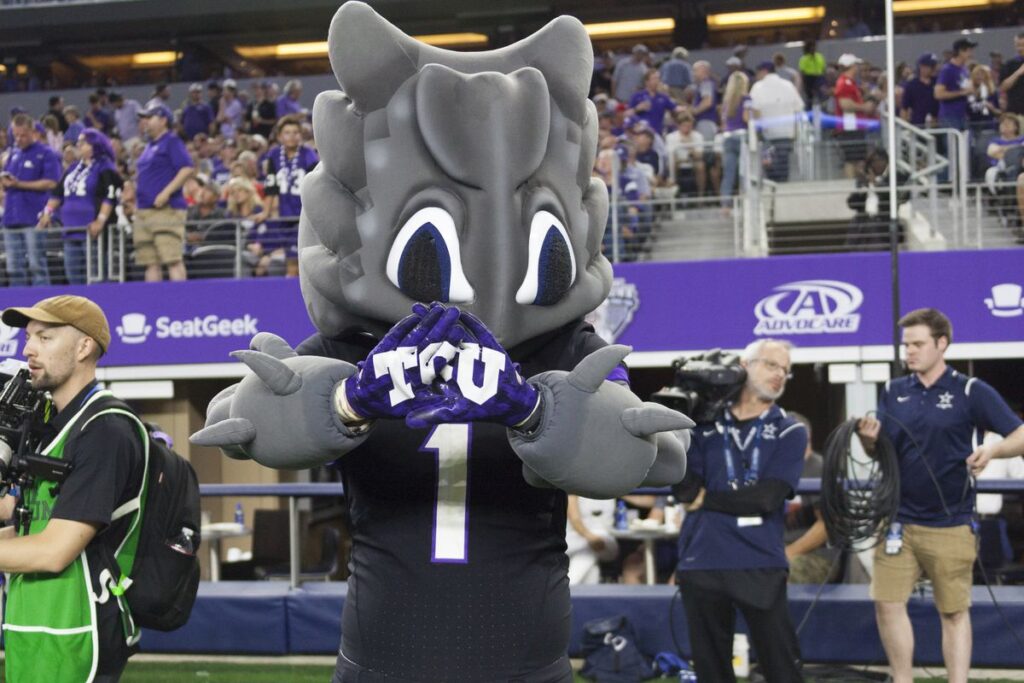
Okay I’m sold. Which games should I look out for this season? And where can I watch the games?
You can find Notre Dame home games on Sky Sports. BT will show games on one of the BT Sport and ESPN channels. You also have the ESPN Player, which works on a subscription basis. There’s always a way to find a game somehow….
Here’s some highlight games this season:
- Week 1 – Notre Dame at Ohio State
- Week 2 – Alabama at Texas
- Week 3 – Penn State at Auburn
- Week 4 – Florida at Tennessee
- Week 5 – NC State at Clemson
- Week 6 – Texas at Oklahoma
- Week 7 – USC at Utah
- Week 8 – UCLA at Oregon
- Week 9 – Michigan State at Michigan
- Week 10 – Clemson at Notre Dame
- Week 11 – Alabama at Ole Miss
- Week 12 – Georgia at Kentucky
- Week 13 – Michigan at Ohio State
Where can I find out more?
Get watching and support your UK content producers. We here at The Jet Sweep will be full throttle in the world of NFL and college football leading up to the offseason and the draft. It would also be great if you subscribed to a podcast I’m a co-host on, which looks at draft prospects, rookies, team-building, college and mock drafts called The NFL Draft Punk Podcast
I also advise to look at some of the traditions – Virginia Tech’s Enter Sandman entrance, Wisconsin’s Jump Around, The Iowa Wave, The Army Vs Navy March, Clemson’s entrance down “The Hill”, West Virginia’s Country Roads, Penn State White Out & Oklahoma’s Sooner Schooner to name a few.
You’re now all set for the college football season!
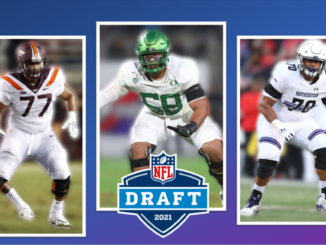
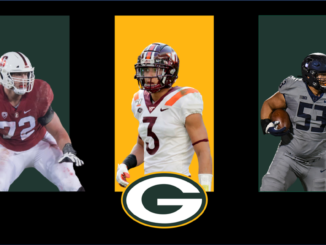
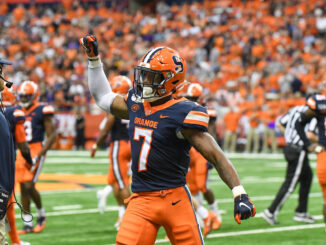
1 Trackback / Pingback
Comments are closed.